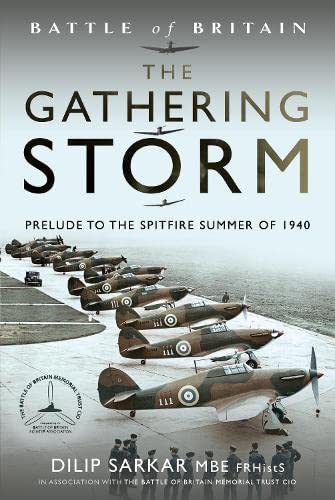

Most ebook files are in PDF format, so you can easily read them using various software such as Foxit Reader or directly on the Google Chrome browser.
Some ebook files are released by publishers in other formats such as .awz, .mobi, .epub, .fb2, etc. You may need to install specific software to read these formats on mobile/PC, such as Calibre.
Please read the tutorial at this link: https://ebookbell.com/faq
We offer FREE conversion to the popular formats you request; however, this may take some time. Therefore, right after payment, please email us, and we will try to provide the service as quickly as possible.
For some exceptional file formats or broken links (if any), please refrain from opening any disputes. Instead, email us first, and we will try to assist within a maximum of 6 hours.
EbookBell Team

4.3
78 reviewsIn this, the first of a new seven volume series on the Battle of Britain, we have the background to the aerial conflict of the summer of 1940 revealed in great detail and told comprehensively as never before. No stone has been left unturned, no angle unexplored. This meticulous approach the research, combined with the human stories and events, many revealed for the first time, tells what Dilip calls ‘the Big Story’. The development of air power, the creation of Britain’s defenses, the German side, the Home Front and political events are all covered – and much more.
After considering the background threads prior to the outbreak of war in 1939, this book then describes the developing conflict on land, sea and in the air. The German invasion of Norway, the Fall of France and the air fighting over Dunkirk are all explored, along with Hitler’s actual preferred policy towards Britain, which at first was one of blockade – not invasion.
The author, with justification, questions the validity of the Battle of Britain’s official start-date being 10 July 1940, evidencing the fact that the fighting actually began eight days earlier. From that date onwards, a day-by-day, hour-by-hour, account of the fighting is provided, giving due recognition to those aircrew lost or wounded before 10 July 1940, and whose names are not, therefore, found amongst ‘The Few’. Due accord is also given to the Royal Navy, and efforts of both Bomber and Coastal commands, emphasizing just what a ‘big’ story this actually is – far from simply concerning a handful of Spitfire and Hurricane pilots.
Through diligent research with crucial official primary sources and personal papers, Dilip unravels many myths, often challenging the
…